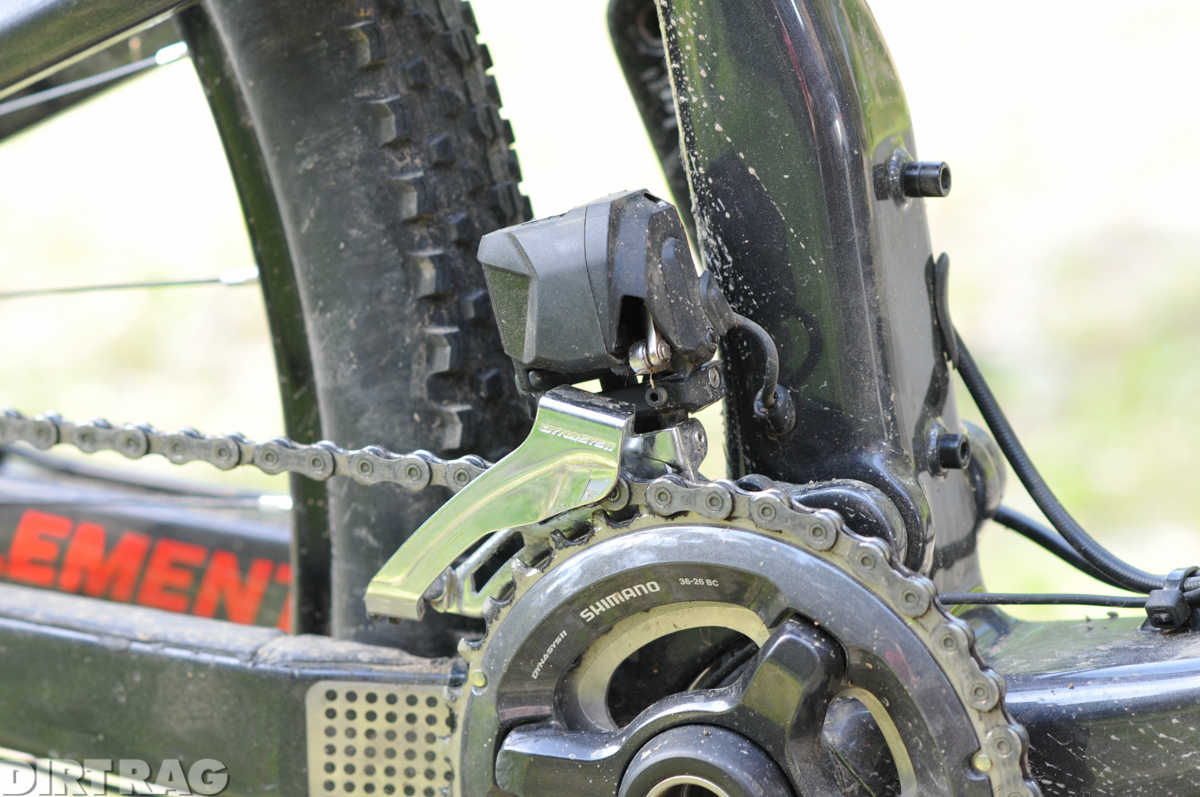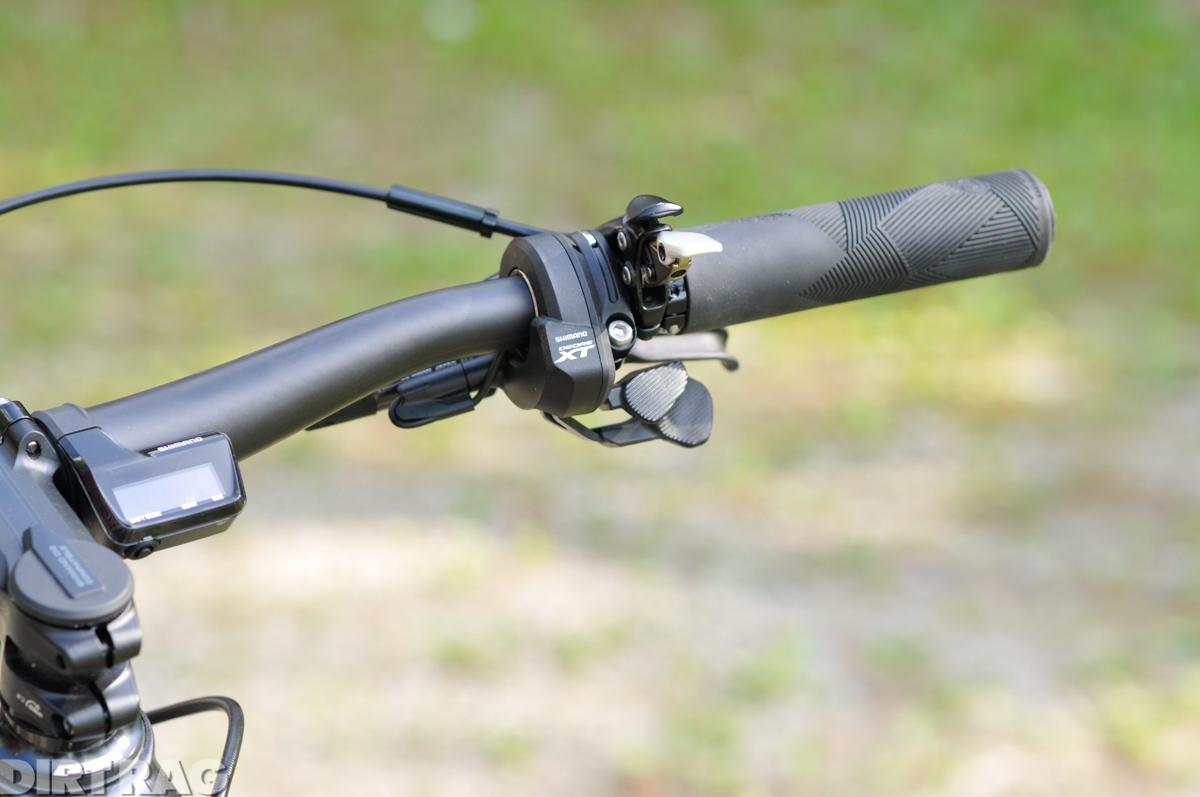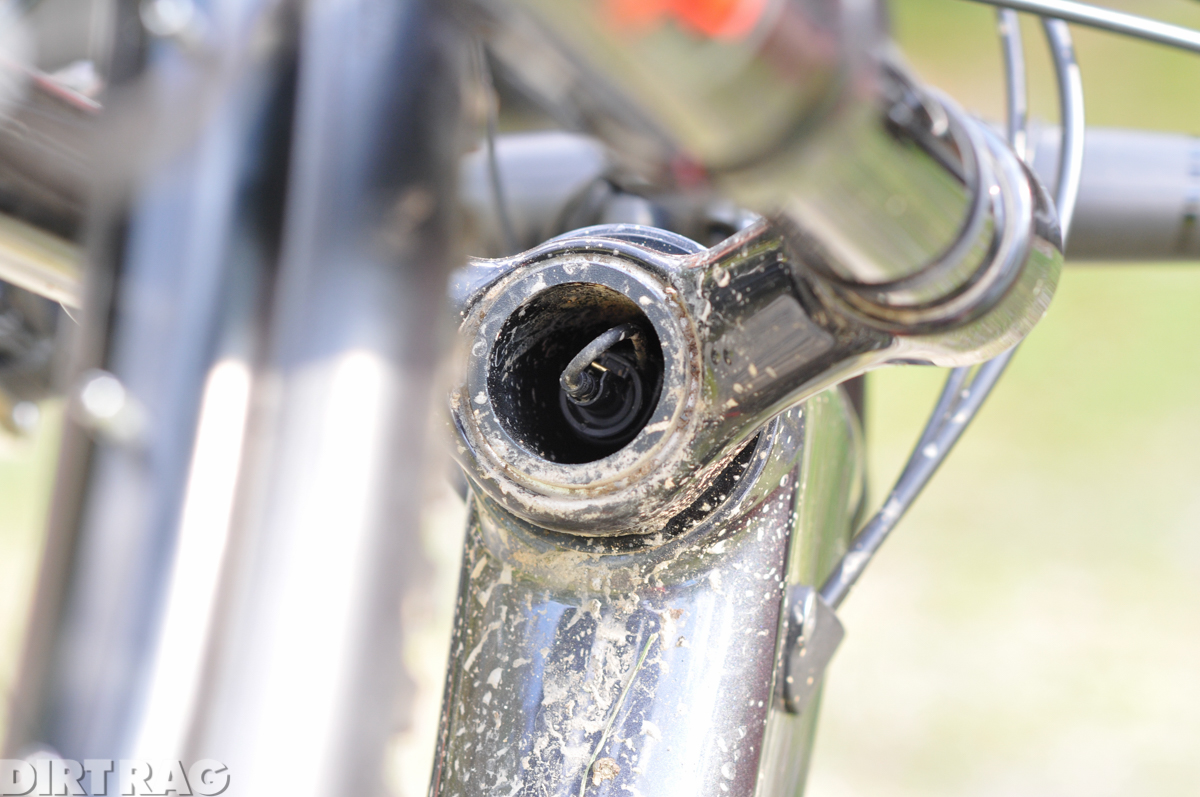Review: 2017 Shimano Deore XT Di2
Originally posted on October 18, 2017 at 1:14 amWords by Mike Cushionbury, photos by Eric McKeegan
When Shimano introduced its XTR Di2 electronic shifting system two years ago it was obvious that this technology would trickle down to the more affordable, second tier Deore XT. As in the past, trickle-down tech from XTR gets tweaked and improved when it reaches XT. In this case with XT Di2, it received updated shift paddle ergonomics and a new SC-MT800 display head. XTR Di2 could only be customized via a PC computer. This new head unit is Bluetooth enabled, so you can wirelessly connect with Shimano’s E-tube app and tune shifting preferences with an iPhone or smartphone app.
This app adjusts which lever handles upshifts or downshifts. I set rear derailleur shift-speed for multiple shifts to the fastest setting, and since I went with a double chainring with Syncro shift (more on that below), I also personalized cog settings for when the front derailleur would shift and how big the jump between cogs would be when it shifted. A thing of note here is to make sure you hit disconnect on the app before you exit or the system won’t work (it took me a few tries to realize that was the problem and that, no, I didn’t screw up a freshly installed group.)

The battery can be housed in a variety of locations depending on frame design. For bikes without an integrated battery mount, Shimano offers a steerer tube mount. When combined with Shimano’s Tharsis bar and stem with internal wire routing, even bikes not designed for Di2 can look clean and stealthy. It can be tricky to route limp wires through a frame that doesn’t have large internal routing ports (external routing is just fine), but once everything is hooked up, no matter how bad your ride conditions it’s unlikely you’ll ever have to change wires.

Battery life is commonly referenced as two months or more of normal riding before a charge, and I’ve found it lasts even longer unless it’s is the only bike you ride every day all day. It’s not uncommon for riders with Di2 to go to a week-long stage race without a charger.
There’s no denying XT Di2 shifts on par with XTR: It’s always precise; it always works with a tactile and light action feel, and it seldom, if ever, needs adjustment once installed. If you switch to a wheel with a different offset, it might need a little trimming, but that’s easy enough to do with the head unit in setup mode.

Syncro shift is more perfect than you’d think; I’ve been on Di2 bikes for a few years, always with a double crank, and I’ve never missed the front shifter. As you shift through the cogs there’s a light “beep” to signify the next shift will move the front derailleur. Shift points for the front derailleur are easy to set: Do you want a seamless transition going from big to small with almost the same ratio, or are you a last-minute shifter and want it to go into a way easier gear immediately? That’s all up to you. As an added bonus, the single shifter frees up underbar real estate on the left side for a dropper remote.
As good as the 2×11 system is, going to a single chainring makes going electric XT Di2 more affordable. Shimano offers a very capable single-ring crankset, and the rear shifter and derailleur will work with most any 11-speed cassette (Shimano offers 11-42 and 11-46). Of course, it will work with any crank—just add the battery, head unit, derailleur and shifter. Approximate cost for a full Shimano XT Di2 single-chainring setup (which Shimano seems to be pushing with XT) with all the bits is around $1,300. If you go with a currently owned 11-speed cassette and crank, the cost goes to about $950 (including a new chain, battery charger and wires).

Of course, the question that always comes up is: Do I need electronic shifting? Any singlespeeder will tell you: hell, no. But if you want to shift, this system provides long-lasting, perfect shifting that can be customized. Is this the future of what we’ll all be riding in 10 years? Probably.
Even if we don’t see widespread acceptance of electronic shifting for mountain bikes, Di2 still shows just how far mountain bike technology has come in a very short time.
Price: $1,350 as tested
